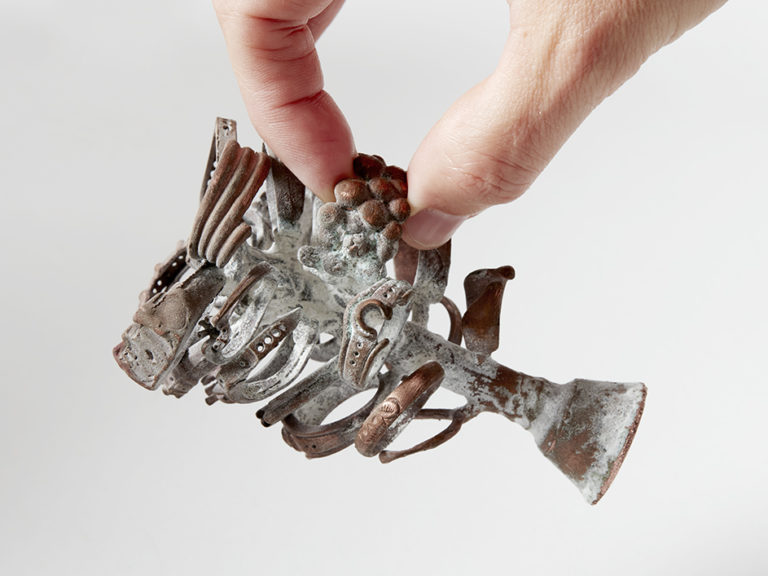
It is a limited edition developed by This is Jackalope’s invited artist. Special editions have an annual periodicity and could be a photograph, a silkscreen, a sculpture, an engraving or any other medium that the artist chooses.
zuhaitz eta lora is the work signed by Nora Aurrekoetxea and produced by This is Jackalope for the year 2023.
Nora Aurrekoetxea. zuhaitz eta lora, 2023
Micro casting, lost wax, copper.
~10 x 14 cm
20 + 2 P.A.
Production Nora Aurrekoetxea + Jabier Alvarez
Price: 375 euros + VAT
Nora Aurrekoetxea’s artistic practice establishes connections between the human experience and the reflection on language, feelings and action, posing the relationship between the material and the immaterial from the sculptural form and the construction of installations conceived as relational spaces.
fotografías: la_foto51
This is Jackalope (TIJ): From the beginning, when you started conceiving your Jackalope edition, you referred to the piece as a ‘tree’, a title that has ended up mutating into a Basque version, ‘zuhaitz eta lora’, that sounds very different from the Castilian words. In your artistic practice, you often establish connections with the language concerning human experience in terms of how we relate to each other. In this case, it is evident that each piece resembles a kind of ring tree, although we also know that you wish to depart from this literal interpretation. Both conflicting ideas suggest various associative narratives. Can you briefly tell us how the idea for the piece and title came about, and how they are situated in your lines of enquiry?
Nora Aurrekoetxea (Nora): Putting the titles in Basque, in contexts where the language is unknown, allows me to present the sonority of the language and/or its form, abstracting it from its literal meaning.
Through these titles, I often make a descriptive allusion, a direct naming of the object, naming the image attributed to something known as something unknown.
In this case:
zuhaitz
eta
lora
tree
and
flower
or
(zuhaitz
=
zur = wood
+ hatz = finger)
wood
finger
and
flower
TIJ: In this piece you have used copper. What was the motivation for using this material?
Nora: It has been purely by chance. It’s the first time I’ve worked with microcasting, previously I’d worked with bronze but never with copper.
It turned out that Jabier Alvarez, the jeweller with whom I’ve worked with on this edition, had never used bronze before but did have some copper in the workshop, so we decided to go with that.
For me, it was an attractive idea to use a metal rarely used in jewellery, one that also has a colour that fades over time like bronze.
TIJ: Tell us about the idea of the ornament being linked to desire, impulse and emotion that clearly attaches itself to this piece.
Nora: My interest in exploring the relationship between structure and ornament and questioning their assumed formal functions is a constant in my work.
I’d already worked with rings before, and in the casting process there is a form of transition that responds to a requirement made by the process itself – the wax rings are situated on a trunk that is denominated as “tree”. This transitoriness fascinated me, and I wanted to capture it as an end in form: a trunk full of rings that becomes a flower.
I am interested in the ornament in terms of its radically emotional function, the attachment to objects and our relationship with them, that not only responds to the idea of caprice, which I like to understand as a resistance to reason, but also fulfils the function of transitional object, transforming emotional states, vehicles of becoming.
If we assume that the function of a ring is in an interdependent relationship with the body – the finger – What happens when its function is annulled by impossibility of form through the absence of body? What is a ring without a finger?